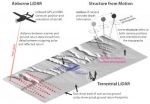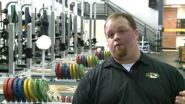(Press-News.org) Alexandria, Va., USA – The International and American Associations for Dental Research (IADR/AADR) have published a paper titled "SSRIs and the Risk of Osseointegrated Implant Failure – A Cohort Study." Selective Serotonin Reuptake Inhibitors (SSRIs), the most widely used drugs for the treatment of depression, have been reported to reduce bone formation and increase the risk of bone fracture. Since osseointegration is influenced by bone metabolism, this study investigates the association between SSRIs and the risk of failures in osseointegrated implants. The manuscript, by researchers Khadijeh Al-Abedalla, Samer Abi Nader, Belinda Nicolau, Emad Rastikerdar, Faleh Tamimi and Xixi Wu, from McGill University, Montreal, Quebec, Canada; and Nach Daniel, from East Coast Oral Surgery, Moncton, New Brunswick, Canada, is published in the OnlineFirst portion of the IADR/AADR Journal of Dental Research (JDR).
This retrospective cohort study was conducted on patients treated with dental implants from January 2007 to January 2013. A total of 916 dental implants in 490 patients (94 implants on 51 patients using SSRIs) were used to estimate the risk of failure associated with the use of SSRIs. Data analysis involved cox proportional hazards, generalized estimating equations models and Kaplan-Meier analysis. After three to 67 months of follow-up, 38 dental implants failed and 784 succeeded in nonusers group while 10 failed and 84 succeeded in SSRIs-users group.
The primary outcome was that compared with non-users of SSRIs, SSRIs usage was associated with an increased risk of dental implants failure (HR= 2∙31; P< 0∙01). The failure rates were 4.6% for SSRI non-users and 10.6% SSRI users, respectively. The secondary outcomes were that small implant diameters (≤4mm) (P=0∙01), bone augmentation (P=0∙04) and smoking habits (P END
Widely used depression drug associated with dental implant failure
2014-09-03
ELSE PRESS RELEASES FROM THIS DATE:
Story from the Department of Energy's Oak Ridge National Laboratory, Sept. 2014
2014-09-03
To arrange for an interview with a researcher, please contact the Communications staff member identified at the end of each tip. For more information on ORNL and its research and development activities, please refer to one of our media contacts. If you have a general media-related question or comment, you can send it to news@ornl.gov.
OPTICS – Precision projectile tracker …
Rifle optical sighting systems with a 19th century heritage could blast into modern times with a laser-based bullet tracking system being developed by a team led by Slobodan Rajic of Oak Ridge National ...
Trouble starting a task? Perception of time may be the problem, study finds
2014-09-03
Completing tasks and crossing them off the ubiquitous "to-do" list is a great feeling. But what about those nagging tasks we keep putting off? What's the difference between those jobs that get completed and those that do not?
The answer may be our perception of time, according to new research by Yanping Tu, a doctoral candidate at the University of Chicago's Booth School of Business.
The study, "The Categorization of Time and Its Impact on Task Initiation," recently published in the Journal of Consumer Research, finds that people are more likely to begin a job when, ...
How much gravity is enough?
2014-09-03
TORONTO, September 3, 2014 – Keeping upright in a low-gravity environment is not easy, and NASA documents abound with examples of astronauts falling on the lunar surface. Now, a new study by an international team of researchers led by York University professors Laurence Harris and Michael Jenkin, published today in PLOS ONE, suggests that the reason for all these moon mishaps might be because its gravity isn't sufficient to provide astronauts with unambiguous information on which way is "up".
"The perception of the relative orientation of oneself and the world is important ...
Team develops new, inexpensive method for understanding earthquake topography
2014-09-03
Boulder, Colo., USA – Using high-resolution topography models not available in the past, geologists can greatly enrich their research. However, current methods of acquisition are costly and require trained personnel with high-tech, cumbersome equipment. In light of this, Kendra Johnson and colleagues have developed a new system that takes advantage of affordable, user-friendly equipment and software to produce topography data over small, sparsely vegetated sites at comparable (or better) resolution and accuracy to standard methods.
Their workflow is based on structure ...
Study sets guideline for determining effectiveness of college football training methods
2014-09-03
VIDEO:
Athletic performance varies from day to day, which can make it difficult for strength and conditioning professionals to judge whether athletes' improvements are due to effective training. Now, University of...
Click here for more information.
COLUMBIA, Mo. –Athletic performance varies from day to day, which can make it difficult for strength and conditioning professionals to judge whether athletes' improvements are due to effective training. Now, University of Missouri ...
NIH-led scientists discover HIV antibody that binds to novel target on virus
2014-09-03
WHAT:
An NIH-led team of scientists has discovered a new vulnerability in the armor of HIV that a vaccine, other preventive regimen or treatment could exploit. The site straddles two proteins, gp41 and gp120, that jut out of the virus and augments other known places where broadly neutralizing antibodies (bNAbs) bind to HIV. This newly identified site on the viral spike is where a new antibody found by the scientists in an HIV-infected person binds to the virus. Called 35O22, the antibody prevents 62 percent of known HIV strains from infecting cells in the laboratory and ...
Hawaii scientist maps, names Laniakea, our home supercluster of galaxies
2014-09-03
University of Hawaii at Manoa astronomer R. Brent Tully, who recently shared the 2014 Gruber Cosmology Prize and the 2014 Victor Ambartsumian International Prize, has led an international team of astronomers in defining the contours of the immense supercluster of galaxies containing our own Milky Way. They have named the supercluster "Laniakea," meaning "immense heaven" in Hawaiian. The paper explaining this work is the cover story of the September 4 issue of the prestigious journal Nature.
Galaxies are not distributed randomly throughout the universe. Instead, they are ...
Sequencing of 5 African fishes reveals diverse molecular mechanisms underlying evolution
2014-09-03
Cambridge, MA. Wed. September 3, 2014 — In an effort to understand the molecular basis of adaptation in vertebrates, researchers sequenced the genomes and transcriptomes of five species of African cichlid fishes. A research team led by scientists at the Broad Institute of MIT and Harvard uncovered a variety of features in the cichlid genomes that enabled the fishes to thrive in new habitats and ecological niches within the Great Lakes of East Africa. In addition to helping explain the complex genomic mechanisms that give rise to incredible diversity among cichlid fishes, ...
Airlock-like transport protein structure discovered
2014-09-03
Palo Alto, CA—Sugars are an essential source of energy for microrganisms, animals and humans. They are produced by plants, which convert energy from sunlight into chemical energy in the form of sugars through photosynthesis.
These sugars are taken up into cells, no matter whether these are bacteria, yeast, human cells or plant cells, by proteins that create sugar-specific pores in the membrane that surrounds a cell. These transport proteins are thus essential in all organisms. It is not surprising that the transporters of humans and plants are very similar since they ...
Carbon stored in the world's soils more vulnerable to climate change than expected
2014-09-03
The response of soil microbial communities to changes in temperature increases the potential for more carbon dioxide to be released from the world's soils as global temperatures rise, scientists have revealed.
The potential for global warming to stimulate decomposition rates in soils, and thus release large quantities of carbon dioxide to the atmosphere, has long been considered to be one of the potentially most important positive feedbacks to climate change. However, the results from more recent studies have suggested that responses within microbial communities could ...




